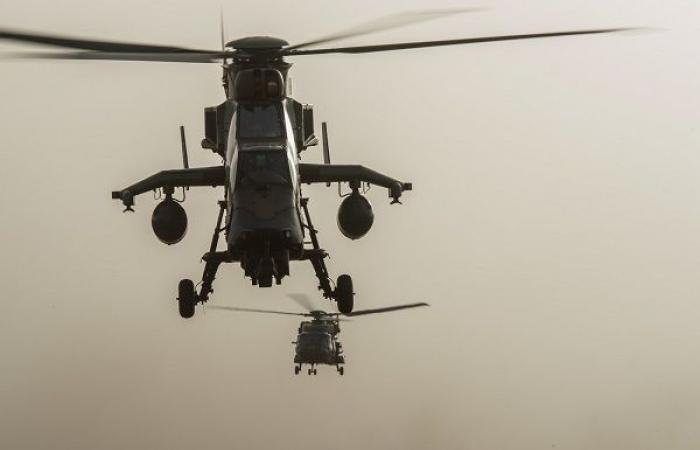The widespread use of FPV drones [First Person View] and remotely operated munitions [MTO] on the Ukrainian battlefields does it sound the death knell for the reconnaissance and attack helicopter? Some are convinced of this. This is the case of the US Army, which has decided to cancel its FARA program [Future Attack Reconnaissance Aircraft]then supposed to allow it to replace part of its AH-64E Apache and its OH-58 Kiowa. Others urge caution, believing that the truth of one conflict will not necessarily be that of the next. Clearly, the Army Light Aviation [ALAT] fits into this logic.
Moreover, the helicopter, whether attack or maneuver, can coexist very well with drones.
This is the meaning of the European MUSHER project [Manned Unmanned System for HelicopteR]which was recently the subject of a demonstration full of promise, the idea being to evolve helicopters and drones within a “Manned-Unmanned Teaming” network [MUM-T] unique. Such a capability is expected to be integrated into the Mk2+ version of the Tiger as well as the NH-90 Cayman.
Incidentally, as recalled by General David Cruzille, Commander of Light Aviation of the Army [COMALAT]in an interview broadcast by the Future Combat Command [CCF]the need to develop cooperation between helicopters and drones appeared in the doctrine documents developed already 15 years ago.
“The drone today is a great opportunity. There is such a technological leap that we can move from doctrine to implementation,” said General Cruzille. And there is no question of the ALAT losing time while waiting for the development of the “perfect drone”.
“The goal is not to wait for the ideal drone that will do 100% of what is expected of it. But if we already have drones that can bring us two thirds of what we expect, then we have to grab this ball,” explained COMALAT.
Also, the ALAT has embarked on the “dronization of aerocombat”, which is, according to General Cruzille, an “ambitious and committed approach”. Clearly, it involves using drones – available on the market – from a helicopter to “see and shoot further” as well as to decoy the adversary.
An experiment was recently carried out for this purpose by the 3rd Combat Helicopter Regiment [RHC]an FPV drone having been implemented by an operator installed in the hold of a maneuvering helicopter.
More generally, it involves developing the ELA concept [engins lancés par aéronef].
“It’s a concept that the industry is working on. To put it simply, we can imagine that a drone could be launched from a Tiger and which could observe an area 10 or 20 km ahead, explained COMALAT. It could also be possible to launch remotely operated munitions or drones tasked with “decoying the enemy by drawing their attention to an area where you do not intend to go with your helicopters,” he added. .
Such a capacity would also be interesting for maneuvering helicopters, such as the NH-90 Caïman, but also for the H160M “Cheépard”, the successor to the Gazelle. For these two types of devices, an operator would take place in the rear hold to direct the drone, which would avoid increasing the cognitive load on the crew.
But in the longer term, that is to say in 15 or 20 years, the ALAT hopes to be able to have a “tactical aerocombat drone”, performing “at the right level” so that it is not too expensive, the idea being to gain mass. This device would be a sort of “faithful wingman” for the combat helicopter of the future, one of the main qualities of which must be “connectivity”. Which, for the Army, will accelerate the intelligence loop while strengthening its capabilities in collaborative combat.






